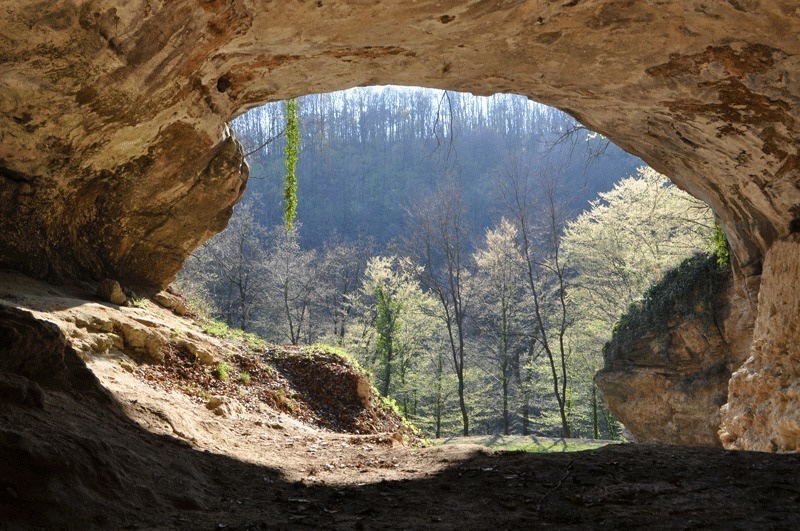You May Be More 'Neanderthal' Than You Thought

A female Neanderthal who lived in what is now Croatia 52,000 years ago is revealing that our "caveman" relatives may have passed on genes that play roles in cholesterol levels, eating disorders, arthritis and other diseases today, the researchers who sequenced her genome say.
And some modern humans are carrying around more Neanderthal DNA than scientists had thought: The study found that the genomes of modern human populations that originated outside Africa hold between 1.8 and 2.6 percent Neanderthal DNA. That's much higher than previous estimates of 1.5 to 2.1 percent.
Neanderthals were the closest extinct relatives of modern humans. Research over the past decade has revealed that Neanderthals interbred with the ancestors of modern humans who migrated out of Africa, contributing variants of genes that play a wide variety of roles in modern human biology, such as in depression, heart attacks, nicotine addiction and obesity.
By extracting DNA from Neanderthal fossils, researchers sequenced the genomes of five Neanderthals. However, until now, just one of these yielded high-quality data — that of a woman found in Denisova Cave, in the Altai Mountains in Siberia. The fossil of the woman, who lived about 122,000 years ago, is known as the Altai Neanderthal. [Denisovan Gallery: Tracing the Genetics of Human Ancestors]
Now, scientists have fully sequenced the genome of another female Neanderthal — this one from Vindija Cave, in Croatia — who lived about 52,000 years ago. Prior work suggested that Neanderthals lived in Vindija Cave until relatively late in their history. Scientists estimate that Neanderthals in Europe went extinct around 40,000 years ago.
Neanderthal genes
In the new study, the researchers analyzed billions of DNA segments from a bone fragment discovered in 1980. It was challenging to find a bone from Vindija Cave that carried enough Neanderthal DNA to yield high-quality data and that had relatively little contamination from modern-human and other DNA, said lead study author Kay Prüfer, a paleogeneticist at the Max Planck Institute for Evolutionary Anthropology in Leipzig, Germany.
"Advances in laboratory methods helped us to overcome some of these challenges, in combination with cheaper sequencing technology," Prüfer told Live Science.
Sign up for the Live Science daily newsletter now
Get the world’s most fascinating discoveries delivered straight to your inbox.
The new findings suggest that, compared with the Altai Neanderthal, the Vindija Neanderthal was more closely related to the Neanderthals who interbred with the ancestors of modern humans living outside Africa. This closer relation allowed the scientists to identify an additional 10 to 20 percent more Neanderthal DNA in modern humans. [In Photos: Neanderthal Burials Uncovered]
The newly identified Neanderthal gene variants found in modern humans play roles in blood levels of vitamin D and "bad" LDL cholesterol, as well as in eating disorders, body fat levels, rheumatoid arthritis, schizophrenia and responses to antipsychotic drugs, the study found.
"Variants from Neanderthals are not necessarily bad for your health," Prüfer said. "We find one variant that is associated with LDL cholesterol, and the variant we got from Neanderthals is associated with lower LDL cholesterol."
Their findings also suggested that modern-human DNA entered the Neanderthal gene pool. The scientists estimated that modern human gene flow into Neanderthal populations occurred between 130,000 and 145,000 years ago, before the Altai and Vindija Neanderthals diverged.
Neanderthal inbreeding
In addition, by comparing the genomes of the Vindija Neanderthal and the Altai Neanderthal, the researchers found that the two were surprisingly similar.
"The two Neanderthals were separated by thousands of kilometers and probably lived tens of thousands of years separated in time as well," Prüfer said. "That is why it is so surprising to find them to be so similar."
A small overall Neanderthal population size is the best explanation for this similarity, Prüfer said. The fewer Neanderthals there were, the more likely it was that they had ancestors in common, he explained.
Previous research suggested that the Altai Neanderthal's parents were half-siblings, prompting scientists to wonder if Neanderthals often interbred with family members. The new Vindija genome does not have similar incestuous patterns — a finding that suggests the extreme inbreeding seen with the Altai Neanderthal may not have been common among Neanderthals.
Still, Prüfer noted that the two sets of chromosomes that the Vindija Neanderthal inherited from both of her parents carried only about 1.6 differences per 10,000 base pairs of DNA. (The double strands of DNA that make up each chromosome are made of sets of molecules known as base pairs.)
"For comparison, modern humans in Africa have around 10 differences in 10,000 [base pairs], and Europeans and Asians around seven differences in 10,000 — much more than we see in Neanderthals," Prüfer said. "This shows again that Neanderthals lived in small populations."
In the future, the researchers hope to obtain even more high-quality Neanderthal genomes. "More Neanderthal genomes will help us to better understand how they were related in space and time, but also to narrow down which Neanderthals contributed to disease," Prüfer said.
The scientists detailed their findings online Oct. 5 in the journal Science.
Original article published on Live Science.










